
From frigid winters to humid summers, our Atlantic Canadian climate experiences dramatic shifts in temperature. The drastic differences between seasons in Atlantic Canada make heat pumps an excellent option for both heating and cooling your home, as they have the versatility and efficiency that no other heating or cooling solution can offer. It’s this versatility that allows them to be highly adaptable to our climate.
Learn How Heat Pumps Work Effectively in All Seasons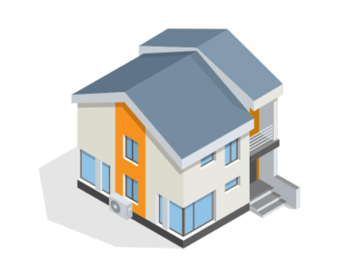
A single heat pump unit has both cooling and heating functions, which keeps you cool in the humid summers, warm during the bitter winters, and comfortable for everything else in between. Here we’ll demonstrate exactly how both ducted and ductless heat pumps provide you with cool and heated air in the sweltering summers and chilly winters.
How Heat Pumps Work In The Summer
Heat pumps operate based on the simple concept of transferring heat from one place to another as heat naturally likes to move from warmer areas to colder areas.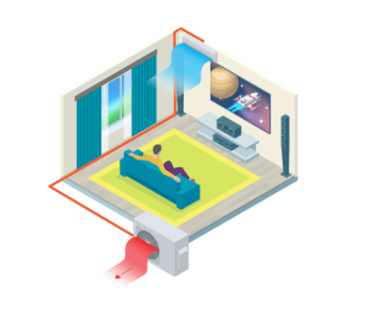
For cooling your home in the summer, heat pumps work the same way a standard air conditioner or refrigerator operates (however, some higher efficiency heat pumps can dehumidify the air more effectively than a standard air conditioner).
Your heat pump takes the hot air inside your home and moves it outside by running it through a set of coils (one on the inside unit, another in the outside unit) which contain a heat absorbing refrigerant liquid. It then changes the refrigerant liquid from liquid to gas, and back again, which continually moves warm air from inside to outside by running it through the tubes connecting the indoor and outdoor units—cooling your home to your desired temperature.
Measuring Cooling Efficiency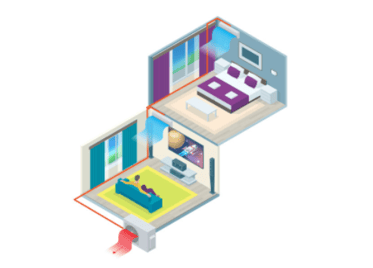
When choosing a heat pump with the most efficient cooling capability, be sure to check the heat pumps SEER (Seasonal Energy Efficiency Ratio) rating. SEER is calculated by taking the total cooling provided (measured in Btu), divided by the total amount of electricity used (measured in watts) over the same period. With SEER ratings, the higher score is more efficient. Keep in mind that in Canada, the minimum SEER rating required for heat pumps is 13, while some Daikin models can provide SEER ratings of over 26.
How Heat Pumps Work In The Winter
While the winters in Atlantic Canada can get among the coldest in the world, heat pumps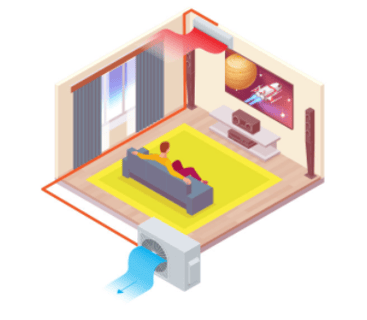 still have the capacity to operate efficiently during the vast majority of winter days. In fact, Daikin heat pumps can function effectively in temperatures as low as -27°C. This is possible because while it may not feel like it, there is still warm thermal energy for your heat pump to pull from the outside air and move into your home. The process for heating your home in the winter is simply the reverse of the process described to cool your home in the summer. Unlike traditional heat sources, heat pumps do not actually generate any heat, but simply move it from outside to inside your home. During a cool winter day, your heat pump will extract heat from the outside air, run it through the refrigerant tubes, along the refrigerant lines between the indoor and outdoor units, and move it into your home as warm air.
still have the capacity to operate efficiently during the vast majority of winter days. In fact, Daikin heat pumps can function effectively in temperatures as low as -27°C. This is possible because while it may not feel like it, there is still warm thermal energy for your heat pump to pull from the outside air and move into your home. The process for heating your home in the winter is simply the reverse of the process described to cool your home in the summer. Unlike traditional heat sources, heat pumps do not actually generate any heat, but simply move it from outside to inside your home. During a cool winter day, your heat pump will extract heat from the outside air, run it through the refrigerant tubes, along the refrigerant lines between the indoor and outdoor units, and move it into your home as warm air.
Measuring Heating Efficiency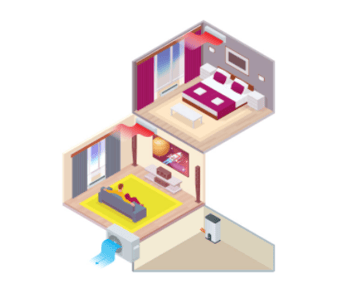
For homeowners concerned with buying a heat pump with the maximum heating efficiency, a high Heating Seasonal Performance Factor (HSPF) is the metric you should be on the lookout for. While the minimum HSPF in Canada is 6.7, the Daikin 8 zone multi-split can function up to 16.5 HSPF.
Heating and Cooling For Your Entire Home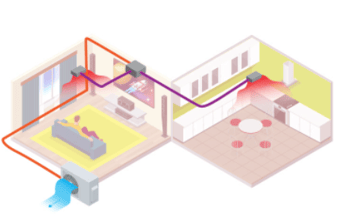
While a single ductless (mini-split) heat pump can heat or cool an area of up to 1,600 square feet, ducted systems have the capacity to heat or cool every room in your home from one central outdoor unit. Better yet, each room’s temperature can be independently controlled for maximum comfort and efficiency.
How ducted systems work is that the central outdoor unit heats or cools the outside air and uses your home’s duct system to spread the air throughout your home, while the indoor units regulate the exact temperature of the air sent to each room.
Upgrade to a Heat Pump: The Modern All-In-One Heating and Cooling Solution
Not only are heat pumps a great investment to help you save on energy costs, but their versatility also allows you to adapt the temperature in your home (or just specific rooms) to meet the constantly-changing Atlantic Canadian weather. There are a wide variety of heat pumps available, along with factors specific to your home and installation requirements. The best way to determine which heat pump best suits you is to contact us and book a no-obligation heat pump consultation. Our experts will assess your goals and walk you through everything you need to get started with the home cooling and heating system that keeps you comfortable and helps you save year-round.
 for all your heat pump needs! We are here to help in anyway we can.
for all your heat pump needs! We are here to help in anyway we can.